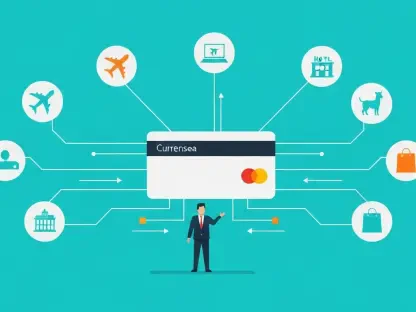In 2024, the landscape of the banking software market is undergoing significant transformation driven by various emerging trends, and these trends are not just influencing operational paradigms but also completely reshaping customer experiences and challenging current regulatory compliance norms. Advances in technology, heightened regulatory measures, and evolving market segmentation are all playing pivotal roles in defining the future dynamics of banking software. This article delves into the key trends shaping the industry, offering a comprehensive analysis of their implications.
Technological Innovation Driving the Market
The integration of cutting-edge technologies has become a cornerstone in the evolution of banking software, signifying a major shift in how financial services are delivered and consumed. Artificial intelligence (AI) and machine learning top the list of innovations that are revolutionizing this sector. These technologies not only automate complex processes but also facilitate smarter decision-making and provide richer customer insights. By leveraging AI, banks can offer highly personalized experiences, substantially improve fraud detection mechanisms, and optimize financial forecasting, making operations more efficient and customer-centric.
Machine learning algorithms, specifically, can analyze vast datasets to identify patterns and trends often overlooked by human analysts. This capacity is particularly beneficial in risk management, enabling banks to predict and mitigate potential threats with unprecedented accuracy. AI-driven systems can continuously learn and adapt, thereby enhancing their efficiency and effectiveness over time. Therefore, the adoption of AI and machine learning technologies is not just a fleeting trend but a necessity for staying competitive in the modern financial ecosystem.
Regulatory Compliance and Challenges
Navigating the increasingly intricate web of regulatory frameworks continues to pose a significant challenge for banking software providers. In 2024, the regulatory landscape has become more stringent, mirroring the global emphasis on data security, consumer protection, and ethical business practices. Compliance with extensive regulations such as the General Data Protection Regulation (GDPR) in Europe and the California Consumer Privacy Act (CCPA) in the United States is now mandatory. Failing to adhere to these regulations can result in hefty fines and severe reputational damage.
Banking software providers must therefore incorporate features that ensure data privacy, secure transactions, and facilitate regulatory reporting. These features are not merely add-ons but essential components that assure regulatory compliance and safeguard against cybersecurity threats. As regulations continue to evolve, software providers are under constant pressure to innovate and offer solutions that simplify the compliance process while maintaining robust security measures. This dual focus on technological innovation and regulatory compliance is shaping the strategic direction of industry leaders.
Market Segmentation and Customization
The banking software market is highly segmented, accommodating various types and applications that cater to specific needs within the financial sector. Primary categories include core banking software, multi-channel banking software, business intelligence (BI) software, and private wealth management software. Each type of software addresses unique operational or managerial aspects, ranging from daily transactional functions to sophisticated, long-term investment management.
In addition to these categories, the applications of banking software are incredibly diverse, spanning risk management, information security, business intelligence, and training and consulting solutions. This segmentation allows banks to choose tailored software solutions that align closely with their operational requirements and strategic objectives. The growing trend towards customization and specialized solutions reflects the increasing demand for software that can offer more precise and efficient banking operations. Financial institutions are keen on investing in solutions that can be fine-tuned to meet their distinct needs, thereby enhancing overall productivity and customer satisfaction.
Dominance of Key Market Players
Major technology firms such as IBM Corporation, Oracle Corporation, and SAP SE continue to dominate the banking software market. These companies command a significant market share due to their technological expertise, comprehensive product portfolios, and extensive global reach. Their dominance is further consolidated through ongoing innovation and adaptability to evolving market demands. Constant investment in research and development (R&D) allows these firms to stay ahead of the technology curve and deliver cutting-edge solutions.
Moreover, these market leaders engage in strategic partnerships and acquisitions to expand their capabilities and fortify their market positions. By amalgamating complementary technologies and solutions, they can offer a more cohesive and expansive suite of products. This aggressive approach not only strengthens their competitive edge but also sets industry standards. While the big players maintain their lead, smaller companies and startups are making inroads by focusing on niche markets and innovative solutions, thereby enriching the overall market landscape.
Regional Variations in Market Dynamics
In 2024, the banking software market is experiencing a profound transformation influenced by a multitude of emerging trends. These trends are not only affecting operational paradigms but are also revolutionizing customer experiences and challenging current regulatory compliance standards. Technological advancements, increased regulatory scrutiny, and evolving customer expectations are all playing critical roles in shaping the future of banking software. For instance, artificial intelligence and machine learning are being integrated to offer personalized services and improve decision-making processes. Meanwhile, the rise of fintech companies is pushing traditional banks to innovate and adapt more quickly than ever before. Additionally, heightened security measures and data privacy concerns are requiring banks to implement more robust compliance strategies. This article delves into these key trends, providing a thorough analysis of their far-reaching implications and how they are redefining the banking landscape. Overall, the future of banking software in 2024 depends on how well institutions can adapt to these dynamic changes.









